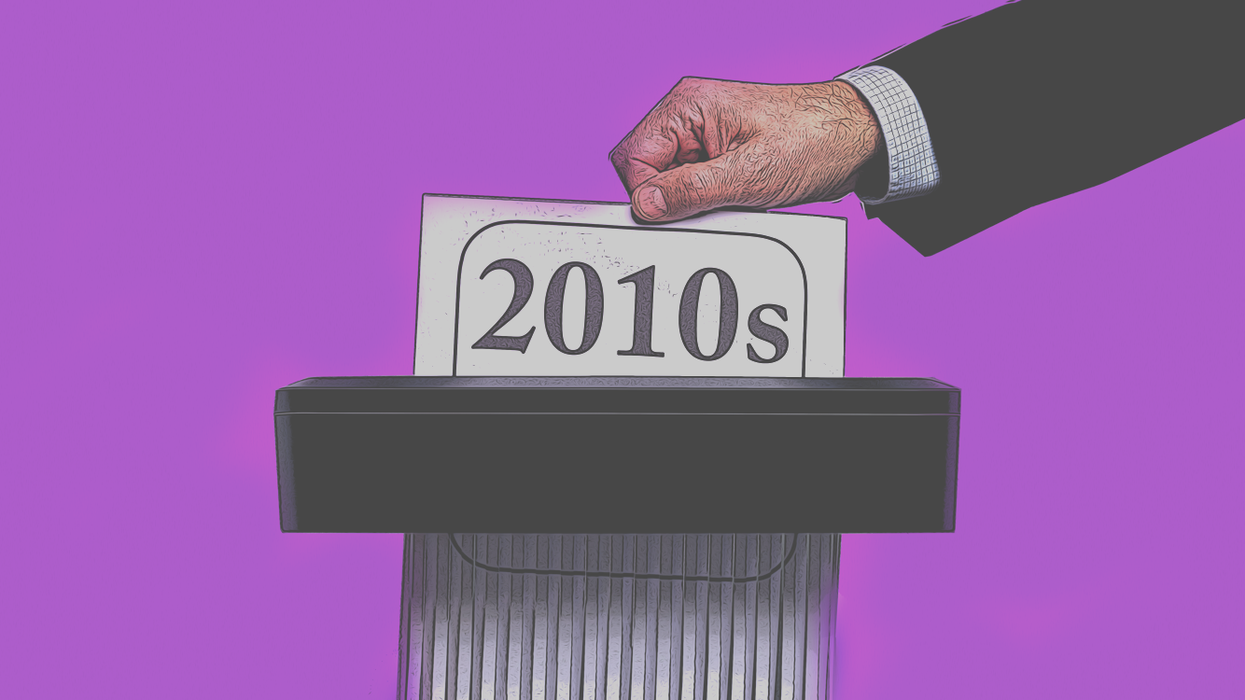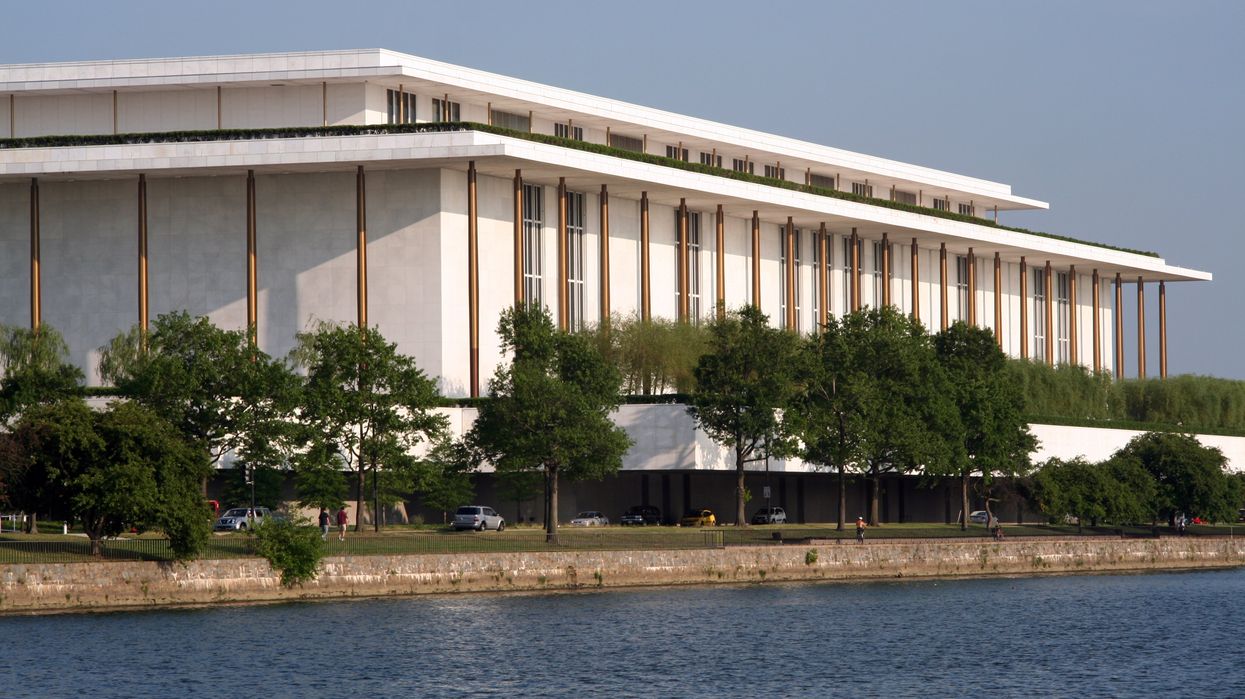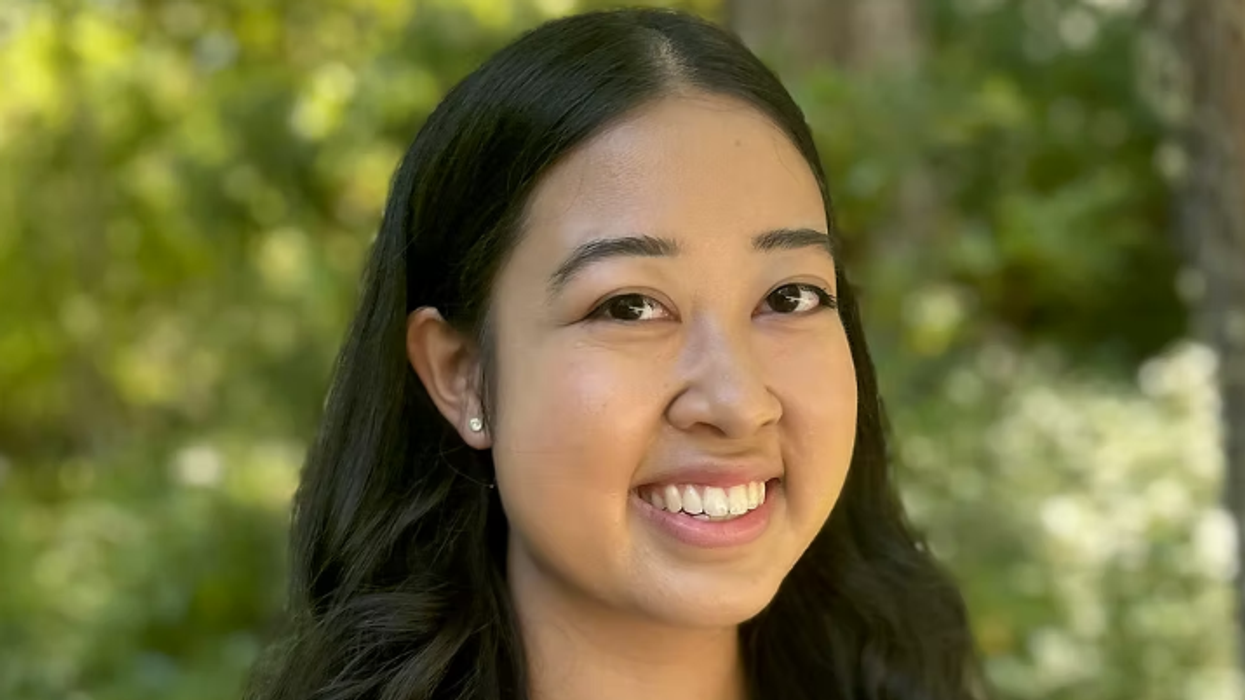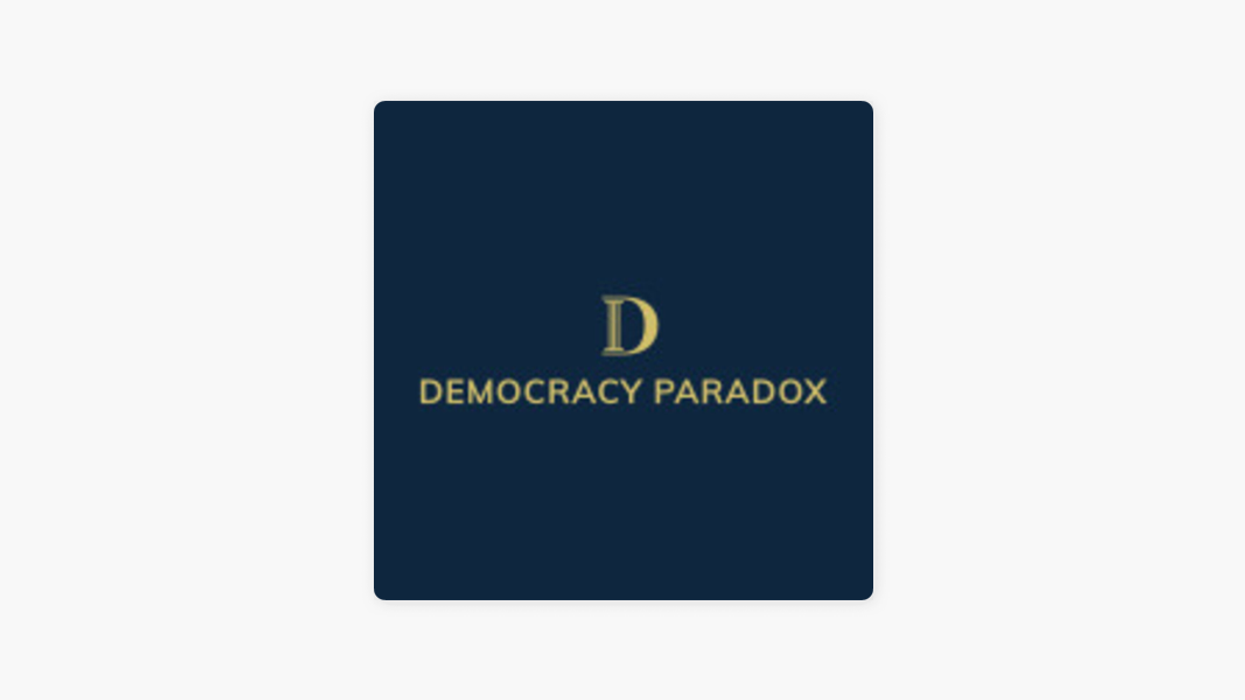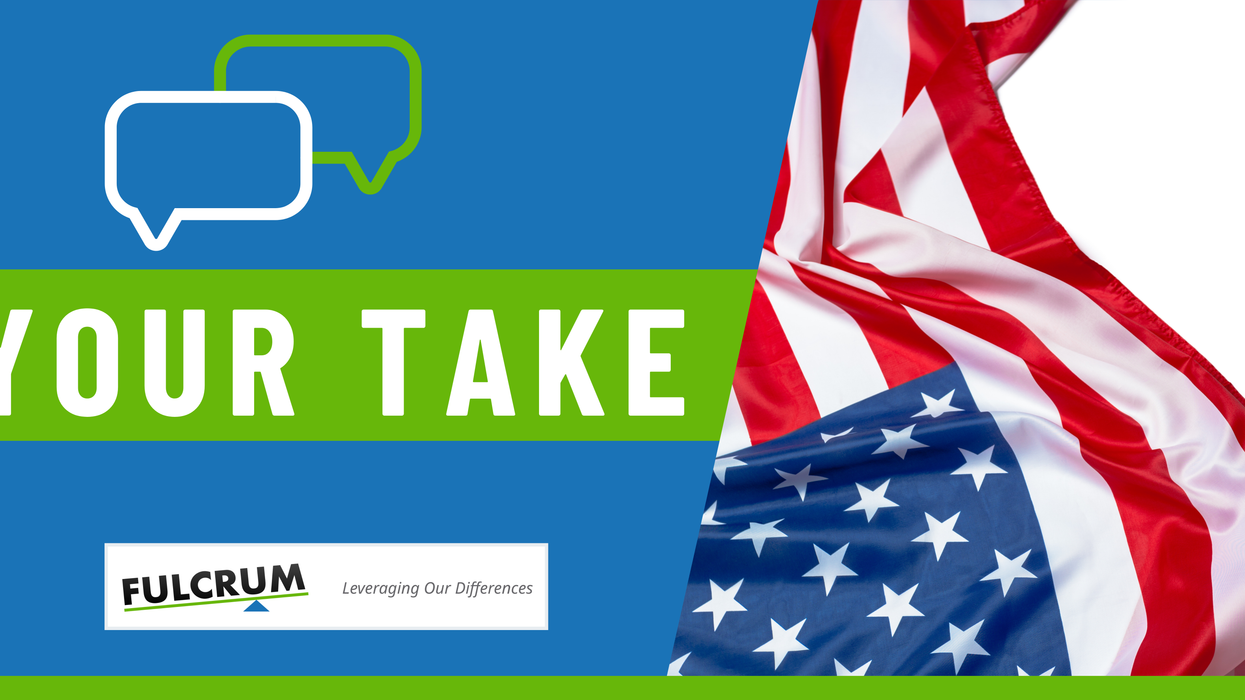Tracking the story of American democracy over the past decade has been a very complex undertaking, dominated by dispiriting accelerations of dysfunction but also punctuated by some developments meriting cautious optimism.
The Supreme Court opened the floodgates of money in politics, turned a blind eye to partisan gerrymandering and paved the way for dozens of measures making it harder to vote in places already marred by histories of political discrimination. Capitol Hill became more gridlocked by tribal partisan animus than ever, even when the topic was fixing the very system in which Congress is supposed to play a vibrant central role. And there's Donald Trump, who won the presidency in an election marked by unparalleled foreign interference and then took busting the norms of a democratic civil society to a whole new level.
At the same time, however, the ever more broken state of affairs in Washington was offset by successes in statehouses and city halls — and by the citizens themselves — at making democracy more equitable and productive for more people. Innovations in public financing of campaigns and election methods that reward consensus candidates were on the rise, while voting rights were returned to almost 2 million felons out of prison. Ballot initiatives and state courts moved against partisan power grabs in legislative mapmaking, allowing more people to pick their politicians, not the other way around.
Finally, the democracy reform movement itself built toward a critical mass of organizational muscle and funding strength. It even generated its own dedicated news site!
To get ready for the 2020s, when the debate over how to put the government more overtly back in the hands of the voters will be more urgent than ever, here's The Fulcrum's take on the top 10 stories about democracy's challenges from the decade now ending, in a somewhat rough chronological order.
Citizens United unleashes the furies of money in politics

Dirtydog_Creative/Getty Images
Three weeks into the decade, the Supreme Court made a landmark decision that has transformed how federal elections are financed for the foreseeable future.
The decision in Citizens United v. Federal Election Commission told corporations, nonprofit organizations, labor unions and other associations they could make unlimited independent expenditures in support of or against political candidates. The justices ruled the First Amendment prohibits the government from restricting such spending. "Political speech must prevail against laws that would suppress it, whether by design or inadvertence," the 5-4 majority declared in an opinion by Justice Anthony Kennedy.
Citizens United, a conservative nonprofit, sued the FEC in 2008 after the agency ruled the advocacy group was prevented, under a 2002 campaign finance law, from paying to broadcast on television an anti-Hillary Clinton film within a month of the presidential primaries in which she was then running.
Since the court's decision, on Jan. 21, 2010, outside spending by corporations, special-interest groups and wealthy donors has skyrocketed thanks to the creation of the super PAC.
Traditional political action committees raise and spend money to support or oppose a particular candidate, legislation or ballot initiative. While they may give to a candidate or campaign, donations are capped at $5,000 per election. Super PACs, on the other hand, allow corporations and special-interest groups to spend as much as they want on elections, so long as the group does not coordinate its strategies or messaging with any campaign.
In the four elections since Citizens United, super PACs have poured $2.84 billion into races for the presidency and Congress, according to the Center for Responsive Politics. In the four elections before the ruling, by contrast, outside spending added up to less than 1 percent of that — just $22 million.
The ever-expanding influence of such big money in campaigns is what animated the cause of campaign finance reformers for the past decade. While proposing various incentives for candidates and groups to spend less, including public funding in return for spending limits, their ultimate goal is to get Citizens United out of the law books.
The most effective way would be amending the Constitution to permit laws regulating election spending, but that idea has nothing close to the requisite support from two-thirds of Congress plus three-quarters of the states. And the Supreme Court has only grown more conservative in the past 10 years, so a campaign to get the decision overturned from the bench seems out of the question. Still, the Democratic presidential candidates of 2020 are almost all promising to make a run at the issue if elected. — Sara Swann
Reaching an apex, partisan gerrymandering becomes a target

CSA Images/Getty Images; edited by Tristiaña Hinton
Republicans made huge gains in the statehouse and governors' races of November 2010, allowing them to dominate the process of drawing the boundaries of congressional and state legislative districts as never before. Their aggressive use of that power kept the maps red for much of the decade even in many states that were turning purple — but it also fueled a wave of campaigns to curb partisan gerrymandering.
All-Republican state governments in 2011 drew the lines of almost half the 435 U.S. House districts, while all-Democratic governments draw about 50. Various studies have suggested that, in the four subsequent elections, about 20 more GOP members were elected than would have been had districts been drawn to reflect statewide vote totals for Congress.
For opponents of partisan gerrymandering, the ultimate victory would have been a Supreme Court decision setting a constitutional limit on how far mapmakers could go to preserve their power. But in June 2019 — after looking at how Republicans had set boundaries to assure they'd win 10 of the 13 congressional seats in North Carolina, and how Democrats had drawn districts to guarantee they'd win seven of the eight in Maryland — the court said such a ruling was beyond its purview. Writing for a 5-4 majority, Chief Justice John Roberts asserted there did not exist a "clear, manageable, and politically neutral" standard for federal judges to apply.
The court said state courts, state legislatures and ballot referendum promoters were free to tackle the issue (which they acknowledged is a problem) and that was happening more and more as the decade ended.
In the fall of 2019, a panel of state judges in North Carolina struck down both the congressional and General Assembly maps as violating the state Constitution's guarantee of fair elections, forcing new and more competitive lines for 2020. Similarly, Pennsylvania's Republican-drawn congressional map was invalidated by that state's Supreme Court in 2018 as violating that state's constitution.
While a handful more such lawsuits started to play out, citizens moved elsewhere to take the mapmaking process out of the hands of politicians altogether. In 2018 alone, the voters of Ohio, Michigan, Missouri, Colorado and Utah approved ballot measures creating new nonpartisan redistricting processes. Fourteen states have now given independent commissions control over drawing state legislative boundaries in 2021, and eight have also assigned their next congressional maps to such panels. Campaigns are underway to bring similar processes to Nevada, Oregon, Illinois and Virginia.
In each place, proponents have reduced their message to a simple sound bite: Voters should pick their politicians, not the other way around. — Geoff West
Voting Rights Act de-activated and suppression spreads anew

Phil Marden/Getty Images
"Our country has changed."With those words, spoken by Chief Justice John Roberts on June 25, 2013, the state of electoral discrimination in the United States was altered in the most dramatic way since 1965, when the Voting Rights Act was signed by President Lyndon B. Johnson as one of the high points of the civil rights movement.
On that day the Supreme Court declared unconstitutional one of the law's central provisions: the section used to determine which states and localities had such bad records of political discrimination that they were required to get advance approval from the Justice Department or a federal court (called "preclearance") — for any changes in election laws, voting procedures or political boundaries.
Roberts led the 5-4 majority in Shelby County v. Holder that decided the evidence of past discrimination used to designate the nine states — mostly in the South — and portions of six other states that were then subject to preclearance was too far out of date.
The impact was almost immediate. Without 24 hours, Texas, one of the states covered by preclearance, announced it was implementing a strict photo ID law for voters. Two other states also previously covered, Mississippi and Alabama, quickly followed with their own tough ID laws. And over the next five years, the U.S. Commission on Civil Rights found, at least 23 states enacted newly restrictive statewide voter laws. Among the new obstacles cited were the closing of voting sites and a reduction in early voting hours.
The court made clear Congress was free to come up with a new preclearance formula, but there was no legislative action until this year. Two House committees, newly under Democratic control, convened more than a dozen field hearings around the country to gather evidence of ongoing voter discrimination. And in December the House passed, with just one Republican joining the Democrats, legislation to revamp the voting rights law including a new formula restoring the preclearance requirement to many parts of the country that used to be covered. The legislation has virtually no chance of advancing in the GOP-controlled Senate, however. — Bill Theobald
Cities and states spend more taxpayer money helping candidates

yuoak/Getty Images; edited by Tristiaña Hinton
With a resounding 63 percent support, Seattle decided in November 2015 to create the nation's first system of taxpayer-funded vouchers for subsidizing local elections. In a decade when the federal system for supporting presidential candidates went essentially unused, the referendum was a high point in the growth of public financing of state and local races.
Advocates say spending government money on campaigns helps reduce the influence of wealthy special interests and permits candidates of modest means to run viable races. Opponents say taxpayer cash and politics shouldn't mix.
The concept was introduced by President Theodore Roosevelt, who used his 1907 State of the Union address to argue that accelerating costs of campaigning would best be curbed by making public funds available to federal candidates.
But it wasn't until the post-Watergate campaign finance reforms of 1974 that Congress created a system where presidential candidates willing to abide by spending limits could tap a fund filled with voluntary contributions from taxpayers. The system was viable until 2008, when Barack Obama declined public funds in the general election in favor of collecting money from individuals and spending as much as he could. No plausible candidate has used the system since.
At the same time, public financing has steadily won favor elsewhere. Nineteen states and 20 cities and counties — home to 116 million — now spend taxpayer dollars on campaigns in the forms of grants or matching funds to candidates, tax breaks or vouchers. Eight places have joined the list this decade. (Albuquerque, however, narrowly rejected in 2019 a plan similar to Seattle's, which gives all registered voters vouchers they can donate to municipal candidates willing to forgo big money gifts from others.)
The House's comprehensive political overhaul, passed with only Democratic votes in 2019, would introduce limited public funding to congressional races, a plan that many Democratic presidential candidates also back. Congressional Republicans are unalterably opposed. — Sara Swann
After hacked presidential election, scramble starts to secure the next
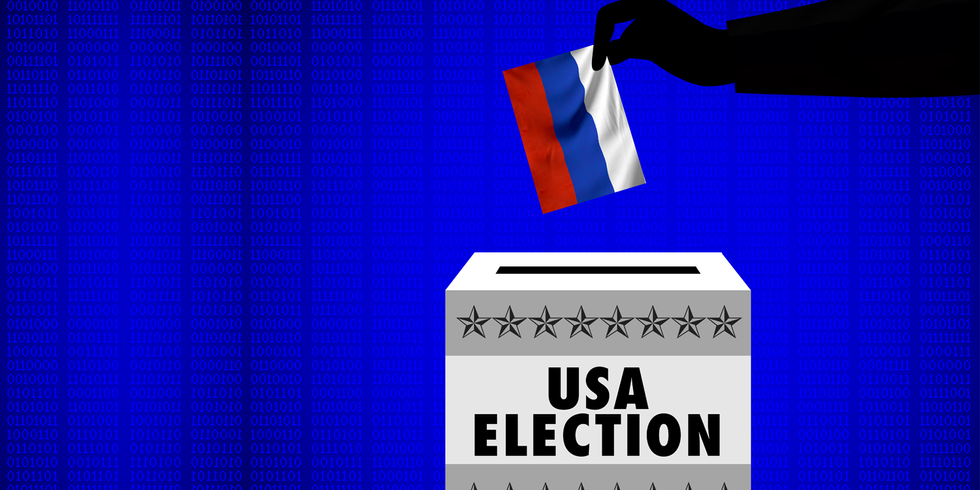
Matt Anderson Photography/Getty Images; edited by Tristiaña Hinton
It began with a trickle: a report in June 2016 that the Russian government had hacked the computer system of the Democratic National Committee and gained access to the party's opposition research on Donald Trump as well as emails and message traffic.
Two months later came reports the FBI had sent a "flash alert" to election officials around the country, warning of Russian hackers penetrating two state election databases. Soon the steady rain of reports became a downpour of often confusing and sometimes contradictory stories by media outlets and claims by politicians — culminating in comprehensive reconstructions of what happened being issued in 2019, only a year before the next election.
Special counsel Robert Mueller's exhaustive report concluded the Russians worked to disrupt the last presidential race "in sweeping and systematic fashion," the most sustained foreign interference ever into an exercise of American democracy. The Senate Intelligence Committee, meanwhile, concluded that attempts had been made to tamper with election systems in all 50 states.
In the end, however, what the Russians came away with was several thousand voter registration records in Illinois and passwords and other bits of information here or there. No registration was changed. No votes were affected.
Still, the damage to the American psyche was dramatic. Before any votes were cast in 2020, federal and state officials had collectively spent several hundred million dollars to reassure the public by modernizing voting equipment, strengthening the security of election systems and protecting voter registration databases. Much of the money, $380 million, was from a grant pool created by Congress, and in December 2019 it replenished the fund with another $425 million that could be spent before the next election.
Officials say they are far more prepared heading into 2020 for the expected renewed attacks by Russian hackers and others. But they say they will also now battle another opponent: the perception by a growing number of Americans that the results of their elections can't be trusted.
An NPR/Marist poll before the 2018 midterm found nearly half of voters do not believe elections are fair, with a clear majority saying they did not think all votes would be counted in that election. That compared with a 2016 Gallup poll that found nearly two-thirds were confident in the vote count. — Bill Theobald
Donald Trump tests the limits of a norm-shattering presidency

seijiroooooooooo/Getty Images; edited by Tristiaña Hinton
Donald Trump was elected in one of the biggest upsets in presidential history in November 2016, boosted by promise late in the race to "drain the swamp"in Washington. His message struck a chord with a core democracy reform constituency — voters disillusioned by a government that's gridlocked, except when it comes to rewarding the rich and well-connected who can game the system at the expense of the everyday voter.
It requires no ideological or partisan bias to recognize he's done nothing of the sort. He has not spent any capital advancing his campaign's "good government" agenda of tighter lobbying regulation, limited campaign donations from foreign companies, congressional term limits and a slower revolving door between government and K Street.
Moreover, he has faced a steady flow of allegations involving conflicts of interest, self-enrichment, foreign alliances and broad claims to keep things secret. And the same goes for more than two dozen of the family members, lobbyists and corporate executives he installed in top administration jobs — starting with the four original Cabinet members forced out under ethical clouds.
Trump's presidency has also been marked by such aggressive and widespread attacks on the rule of law, civil discourse, fact-based policymaking, the independent judiciary, a free press and other democratic norms that he's spawned a shelf worth of books with titles including "How Democracies Die," "How Democracy Ends," "On Tyranny" and "The Road to Unfreedom."
More immediately, Trump's conduct led to showdowns with Congress and the Supreme Court at the end of 2019 that could fundamentally alter the federal balance of power. He seems destined to win at least one.
It's prohibitively unlikely two-thirds of the Senate will remove Trump from office by convicting him of either article of impeachment the House approved in December 2019. The main focus was his alleged abuse of power in pressuring Ukraine to dig up dirt on a potential re-election rival. But acquittal on the other charge could have more lasting consequence, by signaling future presidents can get away with the sort of "unprecedented, categorical and indiscriminate defiance" of congressional subpoenas the House alleges Trump displayed during the impeachment inquiry.
In a similar way, Trump has told his accountants and bankers to rebuff House subpoenas for his tax returns and other financial records. The high court had agreed to decide by June whether to buy his sweeping assertions of presidential immunity or side with Congress' view that its oversight responsibilities should be paramount. — David Hawkings
The cause of democracy reform spans a viable political movement
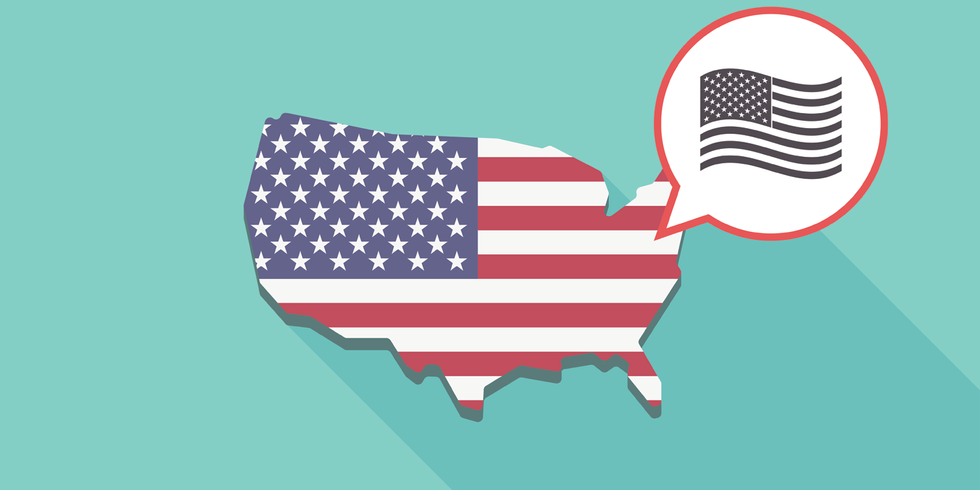
Blablo101/Getty Images
When 1,500 people arrived in New Orleans in February 2018, they did more than watch Academy Award winner Jennifer Lawrence bring star power to the cause of taming government corruption and dysfunction. The crowd's size at the first full-fledged, high-production-value democracy reform convention, dubbed the Unrig Summit, marked the movement's arrival as a high-profile cause.
It was organized by RepresentUs, one of the most prominent among a profound proliferation of groups now fighting to fix a wide array of perceived problems with the U.S. political system.
The roster of good-government organizations — which since the Watergate era had been dominated by Common Cause, the Committee for a Responsible Federal Budget and just a few others — blossomed during the decade to include hundreds of newcomers with targeted agendas and loyal grassroots followers.
While many are local or regional in focus, many others have national aspirations. To name a few: American Promise, End Citizens United and Wolf-PAC are working to revive robust regulation of campaign financing. Demand Progress, American Oversight and Campaign for Accountability are fighting for government transparency and accountability. No Labels, Unite America and Issue One are after bipartisan solutions in a partisan environment. The National Institute for Civil Discourse, Listen First Project and Better Angels arose simply to help people have healthier conversations about politics without the bitter decisiveness that has rapidly divided the country.
There are also umbrella organizations, including the Bridge Alliance and the National Association of Nonpartisan Reformers, worrying about such challenges as rivalries and mission overlap among organizations, the dominance of wealthy white liberals in the movement — and most of all fundraising. One back-of-the-envelope calculation puts the combined budgets of the biggest 85 groups at about $200 million, but far more spending is required to galvanize a critical mass of several million voters behind a reform agenda.
To that end, at the end of 2018 Issue One with help from the Bridge Alliance created The Fulcrum as a journalistically independent news site to cover nothing but democracy reform.
For most of the decade, few politicians of either party spoke up about the system's structural problems. That changed in the early stages of the 2020 presidential campaign, when virtually every Democrat took positions on proposals to revamp the laws of campaign finance, access to the ballot box, voting rights, election security, political ethics and revamping our governing systems.
By the end of 2019, three who looked to have realistic shots at the nomination had signed a pledge to make a comprehensive democratic process overhaul their first legislative priority in the White House: Sen. Elizabeth Warren of Massachusetts, Sen. Amy Klobuchar of Minnesota and Mayor Pete Buttegeig of South Bend, Ind. — Geoff West
Completing a sentence now means the right to vote for millions of felons

erhui1979/Getty Images; edited by Tristiaña Hinton
Florida, the nation's third biggest state and one of its most politically divided, voted almost 2-to-1 in November 2018 to permit an estimated 1.4 million convicted felons (except murders and sex offenders) to return to the polls once they're done with prison, probation and parole.
It was a monumental triumph for one of the top causes of civil rights groups, who see restoring the franchise to freed felons as an essential part of their return to society. Approval of the state constitutional amendment, by a margin of 2.3 million votes, was also a major milestone for the power of citizen initiatives, and it put felon voting rights on the presidential campaign agenda for the first time in memory.
But divide over the issue among politicians remains partisan, in part because a disproportionate share of people who get out of prison are black or Hispanic and tend left.
The issue gained its first headlines this decade when Democratic Gov. Terry McAuliffe signed orders restoring voting rights in Virginia to more than 170,000 of the formerly incarcerated by the end of his term in 2018. Restrictions have also been loosened to allow hundreds of thousands of nonviolent felons to vote again in Nevada, Louisiana, Colorado, Arizona, New York and New Jersey. And upon taking office in late 2019, Democratic Kentucky Gov. Andy Beshear signed an order restoring the right to vote to another 140,000, leaving Iowa the only state that completely denied the ballot box to released felons.
But the fight in Florida isn't over. Months after the referendum, the Republican-controlled Legislature voted to require the payback of all court costs, fines and restitution as a condition for prisoners registering. Voting rights groups are challenging that law in both federal and state courts.
Whatever the outcome, the success of the referendum was a high point in the drive to put more policy making power directly in the hands of the electorate — especially when it comes to democracy reform. More than two-dozen such measures were approved by voters in almost a score of states in 2018 and 2019 alone. — Geoff West
Congressional polarization quickly swallows bold plan to fix the system
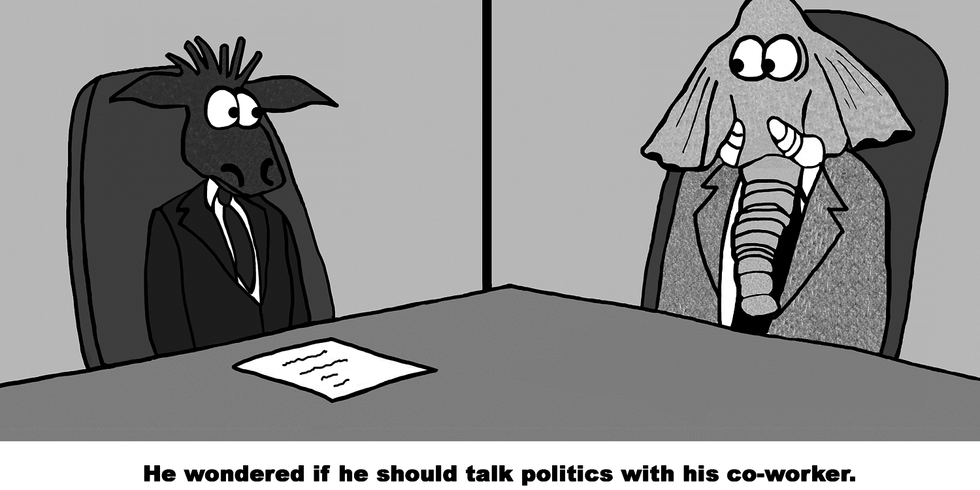
andrewgenn/Getty Images
The nation's polarization and partisanship accelerated without interruption all decade, reflected no more clearly than in the decline of moderation and collaboration on Capitol Hill. For those who lament that aspect of the government's dysfunction, there was no better — or more ironic — illustration of the sorry state of affairs in Congress as of 2019 than the fate of HR 1.
The measure embodies the most comprehensive single plan since Watergate, if not before, for restoring the public's faith that government is honest and the electoral system is fair and trustworthy. And yet it looked like it was designed to fail, and it quickly did die under torrents of hyper-partisan rhetoric from both sides.
While Republicans remained in charge of the Senate, Democrats took control of the House after eight years in the minority — yielding the sort of divided government where compromise is legislating's indispensable ingredient. Yet Democrats made no effort to include Republicans in drafting the bill, even once it became clear that negotiating to delete some provisions and soften others would have secured a decent number of GOP votes.
The legislation was designed to reduce big money's influence on politics, ease access to the polls, end partisan gerrymandering and improve ethical standards in public life. While Republicans were hesitant about the most ambitious proposals, several signaled they could have been won over but for some "poison pills," ranging from a plan for publicly financing congressional races to a requirement that President Trump turn over his tax returns.
Strong bipartisan backing in the House could have given the bill leverage in the Senate. Instead, GOP Majority Leader Mitch McConnell vowed to bury HR 1 from the moment of its unveiling — and amped up his disdain after the House passed the measure in March, 234-193 along party lines.
The result is Democrats get to keep campaigning on the issue of democracy reform, which looks a lot like that's all they were after this year. Left for the voters to decide is whether the party's messaging is more worthy of reward than a track record of finding common ground. — David Hawkings
Alternative voting ideas gain acceptance with Big Apple breakthrough
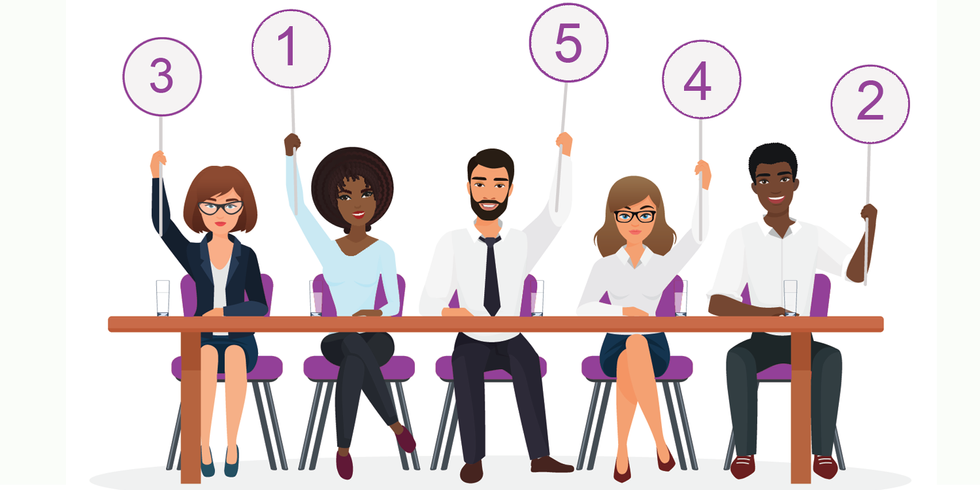
Artis777/Getty Images; edited by Tristiaña Hinton
The place: New York City. The date: Nov. 5, 2019. Record that as the big-time, breakthrough moment for the idea that elections can be about choosing more than one person in each contest.
Because that was when the nation's biggest city voted nearly 3-to-1 to use ranked-choice voting in municipal primaries and special elections. After years of proposals to improve on the system of first-past-the-post plurality elections, the result pushed the multifaceted alternative voting movement to a new level.
"New York City voters showed confidence in growing evidence that ranked-choice voting can strengthen local democracy, eliminate the spoiler effect in large fields of candidates, and allow fresh energy to enter races while making sure that candidates who win do so with majority support from the community," said Rob Richie of FairVote, one of the top groups advocating for RCV, sometimes dubbed the instant runoff method.
Critics counter that RCV is confusing and subject to election fraud. Under this system, voters may list candidates for each post in order of preference. If no one wins outright with a majority of first-place ballots, the person with the fewest No. 1 votes is eliminated and those ballots get redistributed to their No. 2 rankings. This process is repeated until one candidate reaches a majority.
New York became the 18th city, and the sixth this decade, to approve RCV for local contests. And that does not include municipalities in Maine, where voters decided in 2016 to start using the method in contests for governor, the Legislature and Congress.
That set up another bellwether RCV moment, when Democrat Jared Golden took one of Maine's two House seats from incumbent Republican Bruce Poliquin in 2018. Though Poliquin received 46 percent of first place votes, he was edged out in the instant runoff because Golden was the second choice on most of the 8 percent of ballots that named minor party candidates as No. 1.
Mainers liked their status as the first place with statewide RCV well enough that the Legislature expanded its use starting with the November presidential election. The method will be used in several 2020 Democratic presidential nominating contests, starting with the Nevada caucuses in February.
Ranked-choice isn't the only alternative gaining acceptance. In 2018 Fargo, N.D, became the first city to embrace approval voting, in which people choose as many candidates as they find acceptable and the one with the most votes wins. Voters in St. Louis could make a similar choice next spring, which would raise that alternative to a new level of attention. — Bill Theobald





